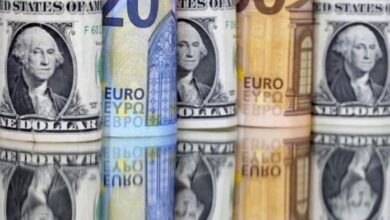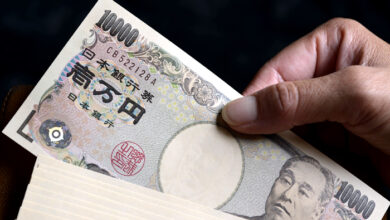Dollar Stabilizes as Debt Ceiling Bill and Fed Officials Take Center Stage

During early European trading on Thursday, the U.S. dollar found stability, hovering near a two-month high. Market participants were digesting the progress made on the U.S. debt ceiling bill, statements from several Federal Reserve officials, and recent Chinese manufacturing activity data.
At 03:55 ET (07:55 GMT), the Dollar Index, which gauges the greenback against a basket of six other currencies, remained mostly unchanged at 104.240. This level was just below the over two-month high achieved in the previous session.
Optimism prevailed as a private survey revealed that China’s manufacturing sector experienced more growth than anticipated in May. This positive development provided hope for a revival in the country’s primary growth engine, particularly after official data had shown a sustained slowdown earlier in the week.
Consequently, the USD/CNY pair dipped 0.1% to 7.1072, with the yuan bouncing back from six-month lows. However, doubts linger regarding the recovery of the world’s second-largest economy since the latest survey only demonstrated a marginal improvement in activity.
Following the U.S. House of Representatives’ approval of a bill to suspend the debt ceiling on Wednesday, the safe-haven dollar has retreated from its recent highs. While the bill awaits Senate approval, the possibility of a default in the world’s largest economy appears to be diminishing rapidly.
As the next Federal Reserve meeting draws near, attention now shifts to the monetary policy intentions of Fed officials. Philadelphia Federal Reserve President Patrick Harker’s recent statement in support of pausing interest rate hikes next month to assess incoming data has significantly boosted the likelihood of a June rate hike pause. Harker emphasized that skipping a rate hike would enable the Committee to gather more data before making decisions about the extent of further policy adjustments.
In other currency pairs, the EUR/USD decreased by 0.1% to 1.0680 after German retail sales exhibited growth of 0.8% month-on-month in April. Although this marked an improvement compared to the previous month’s 2.4% decline, it still represented an annual drop of 4.3%.
However, the focus will be on the eurozone inflation release for May, which is scheduled for later in the session. Inflation pressures across several individual countries have shown signs of easing, potentially leading to a downside risk to the expected 7.0% annual figure for May. Such a scenario would support the stance of dovish members of the European Central Bank governing council, who advocate for an early end to interest rate hikes.
Meanwhile, GBP/USD inched lower to 1.2439 following data from Nationwide building society indicating a further decline in housing prices in May, with a 3.4% annual drop.
In positive news, AUD/USD climbed 0.1% to 0.6506, benefiting from better-than-expected private Chinese manufacturing purchasing managers’ index (PMI) figures. Additionally, USD/JPY rose 0.3% to 139.75, although the yen continued to trade well above the recent six-month lows observed against the dollar.





